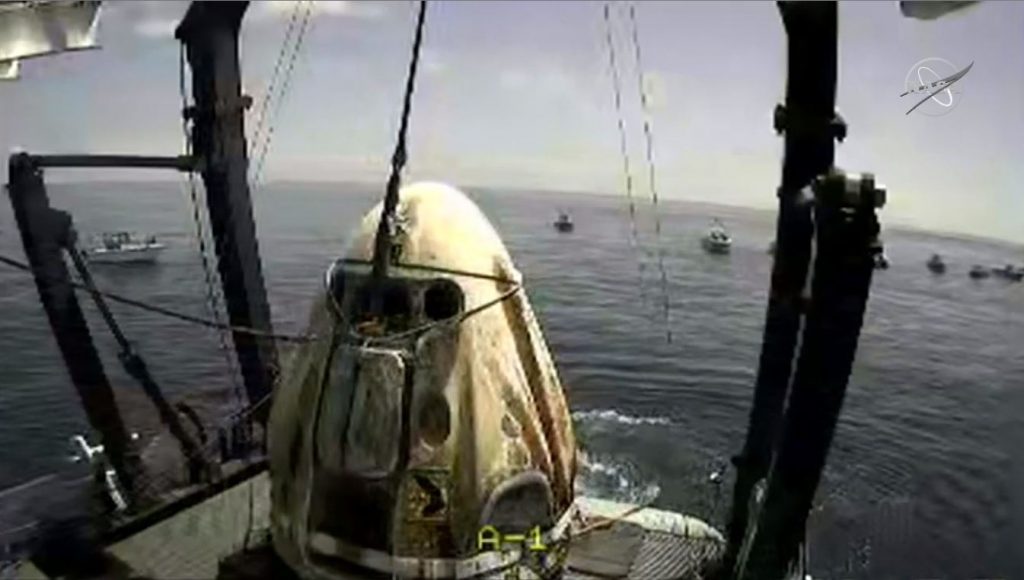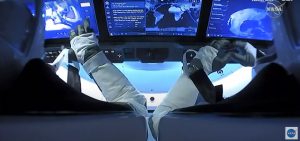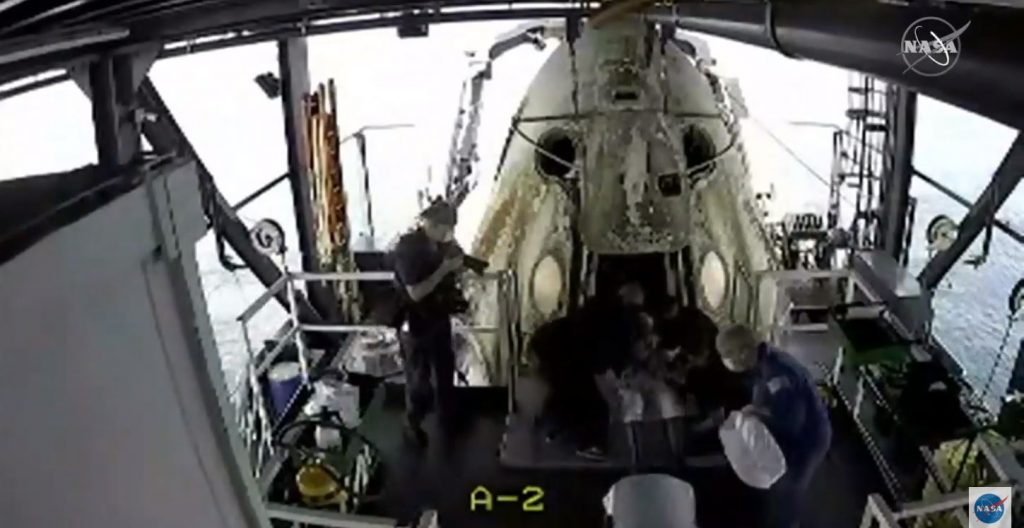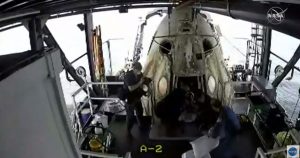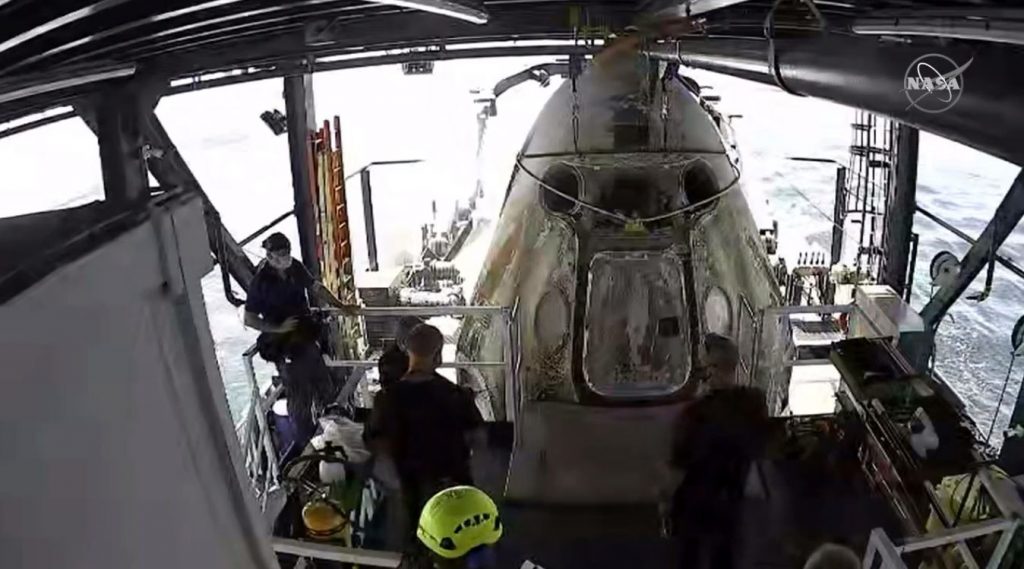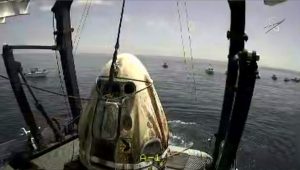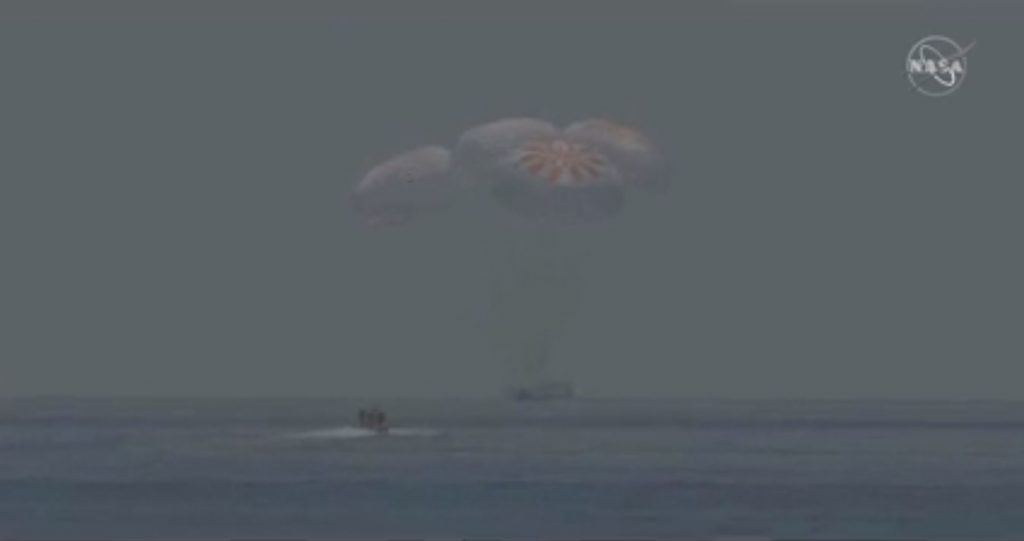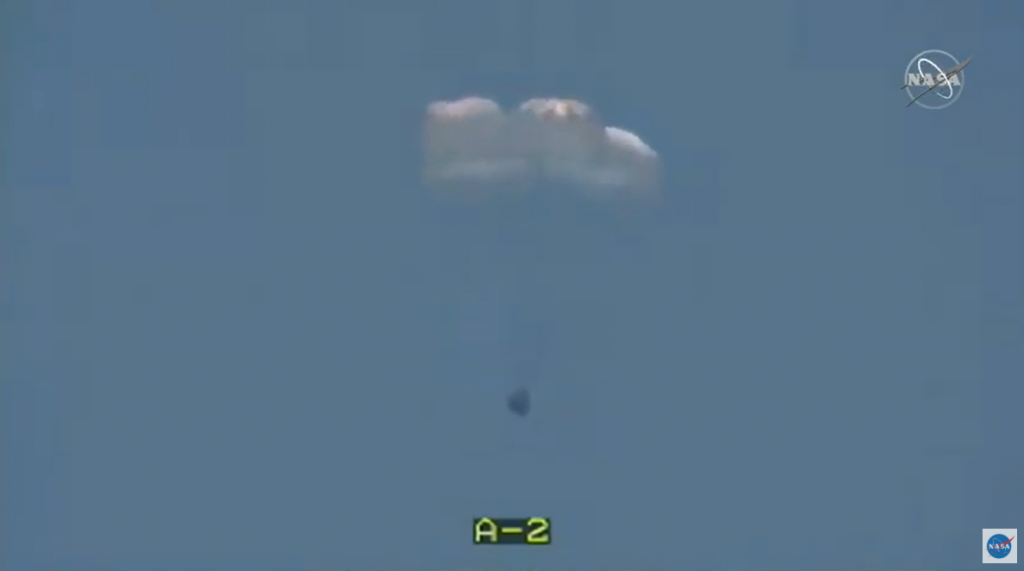
NASA astronauts Robert Behnken and Douglas Hurley splashed down safely in the Gulf of Mexico Sunday afternoon aboard the SpaceX Crew Dragon “Endeavour,” wrapping up a two-month, 27.1-million-mile mission to the International Space Station on the agency’s SpaceX Demo-2 mission. Today’s splashdown at 2:48 p.m. EDT off the coast of Pensacola, Florida, marked the first time a commercially built and operated American crew spacecraft returned from the International Space Station.
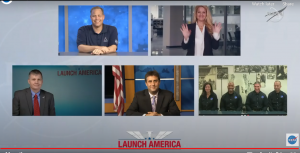
After the successful splashdown, the capsule and crew were successfully recovered by SpaceX. The astronauts are on their way back to Houston, where they will be reunited with their families. Beginning at 7:15 p.m. EDT, NASA will provide live coverage of their arrival and return to Houston.
“It really is a great day; I’m almost speechless as to how well things went today with the deorbit, entry, landing, and recovery of Bob and Doug,” said Steve Stich, manager of NASA’s Commercial Crew Program, during a post-splashdown briefing. “Coming into today, we had three flight objectives: to execute the deorbit and entry of the Dragon capsule, to demonstrate that we could successfully recover that capsule, and that we could also bring back cargo from space. I think we demonstrated all three of those things today. It was just an incredible day.”
The Dragon Endeavour capsule was hoisted from the waters of the Gulf of Mexico and onto the deck of the company’s recovery vessel, “GO Navigator.”

“I have to do a call out to the great SpaceX team; they did extraordinary work. This was an incredibly smooth mission,” said Gwynne Shotwell, president and chief operating officer at SpaceX. “This was an extraordinary mission, an extraordinary day for NASA, for SpaceX, and frankly, for Americans and anyone interested in spaceflight.”
Behnken and Hurley arrived at the orbiting laboratory on May 31, following a successful launch on May 30 on a SpaceX Falcon 9 rocket from NASA’s Kennedy Space Center in Florida.
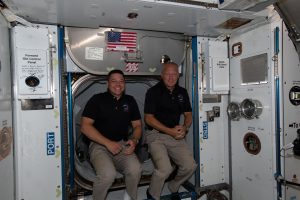
“For 60-plus days, Bob and Doug, the SpaceX team, the Commercial Crew Program, and SpaceX vehicle were on board doing critical science for us,” said NASA’s International Space Station Program Manager Joel Montalbano. “Bob and Doug completed over 110 hours of science, utilization, research, and technology development work that will help this great laboratory that we have in low-Earth orbit and allow us to go to the Moon and to Mars with the Artemis program.”
These activities are a part of NASA’s Commercial Crew Program, which has been working with the U.S. aerospace industry to launch astronauts on American rockets and spacecraft from American soil the International Space Station for the first time since 2011. This is SpaceX’s final test flight and is providing data on the performance of the Falcon 9 rocket, Crew Dragon spacecraft and ground systems, as well as in-orbit, docking, splashdown and recovery operations.
Dragon Endeavour will be returned to the SpaceX “Dragon Lair” in Florida for inspection and processing. Teams will examine the data and performance of the spacecraft throughout the test flight to complete the certification of the system to fly operational missions for NASA’s Commercial Crew and International Space Station Programs. The certification process is expected to take about six weeks. Following successful certification, the first operational mission, Crew-1, will launch with Crew Dragon commander Michael Hopkins, pilot Victor Glover, and mission specialist Shannon Walker – all of NASA – along with Japan Aerospace Exploration Agency (JAXA) mission specialist Soichi Noguchi. That launch is targeted for late September.
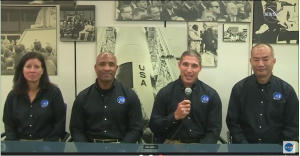
“On behalf of Crew-1 and our families, we want to say congratulations to Bob and Doug their families,” Hopkins said, with Walker, Glover and Noguchi beside him. “We’ve had an opportunity to witness the work and dedication it’s taken to pull off the Demo-2 mission, and it’s been truly impressive and inspiring.”
“As you can imagine, we’ve got big smiles on our faces from what we saw from the Demo-2 mission. I said this after the launch, and I’m going to say it again after watching splashdown: it did not seem like this was the first NASA-SpaceX mission with astronauts on board,” Hopkins added.
The goal of NASA’s Commercial Crew Program is safe, reliable and cost-effective transportation to and from the International Space Station. This could allow for additional research time and increase the opportunity for discovery aboard humanity’s testbed for exploration, including helping us prepare for human exploration of the Moon and Mars.
“We need to remember that this is just the beginning. Now is the time to capitalize on all the great programs that have recently been established, to include going sustainably to the Moon under a program we call Artemis,” said NASA Administrator Jim Bridenstine. “We’re going to the Moon sustainably; we’re going to go with commercial partners, with international partners. We’re going to use the resources of the Moon to learn how to live and work on another world for long periods of time. We’re going to take all of that knowledge and we’re going to go to Mars.”

